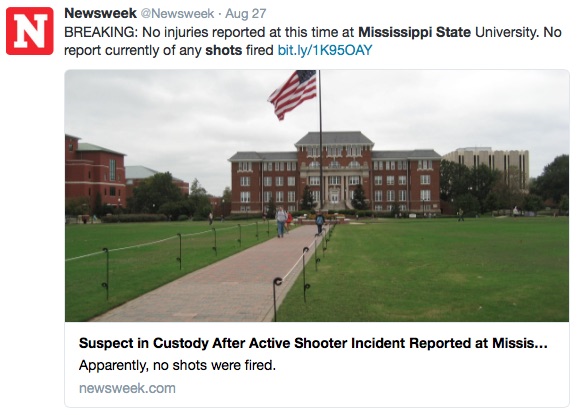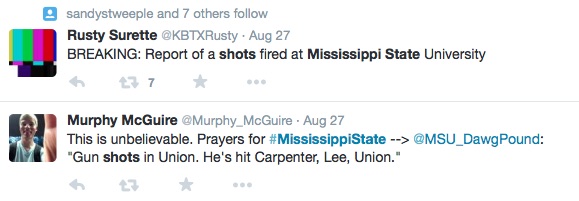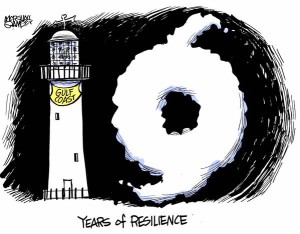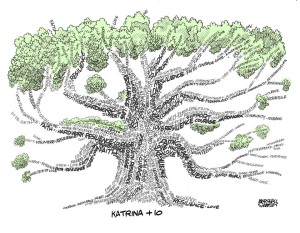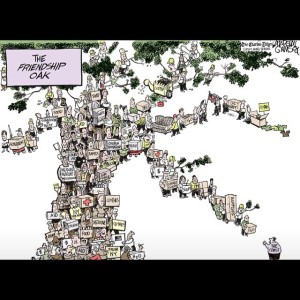
Today’s lecture will be based on an excellent post by Tony Robbins. I’ve posted pieces of it here but please read the whole post by clicking here: How to #Win at Social Media My comments are in bold.
“A social profile doesn’t equal a powerful public presence. Creating and building steady engagement across social media channels with your company or brand is no longer a should — it’s a MUST — for businesses of every size. “
I will also add that it is a must for a for every person who is building a personal brand. The key word is ENGAGEMENT. Let me repeat that again: The key word is ENGAGEMENT.
“The oceans of potential fans and customers can seem daunting, filled with predators poised to pounce on any unwitting brand or company for making the slightest social faux pas.”
The bottom line: Every bridge has a few trolls hanging under it.
“Your company or brand’s Facebook page and Twitter handle is now the first point of contact for all interactions, positive or negative, as Entrepreneur explains.”
It’s your official voice!
“People are motivated to share great experiences, as well as complaints, suggestions, questions or even cordial jokes — and more often than not, expect a reply or acknowledgment.”
Your Tribe (see Seth Godin’s book by the same name) wants a piece of you.
“A recent study by Goldman Sachs revealed that businesses who use social media well are 34% more likely to be trusted by young, working-aged people.”
This makes sense. You’re going to be where they are.
Best sentence in the piece and one that I will drill into your head time and time again.
“Stop thinking of your social channels as a campaign and start appreciating the power of the constant conversation — harness and build authentic, lasting influence. “
Let me repeat this:
Stop thinking of your social channels as a campaign and start appreciating the power of the constant conversation — harness and build authentic, lasting influence.
Got it? Good.
“If you’ve ever received a public reply to one of your Tweets or Facebook messages on an official brand or company profile, you remember the “warm fuzzy” feeling of being publicly acknowledged. Handled effectively, social recognition rewards are not only free of cost, they can help convert casual customers into vocal brand advocates who contribute (positively) to a company’s cultural impact.
Users who post positive messages love the illusion of interacting with the brand-as-friend.”
I got a reply to a question I asked one of my favorite rock performers on his Tumblr site. Do you think I’m a bigger fan now? Oh heck yes. What if he had been a jerk? See? The Internet is like Mississippi. Your reputation can be ruined before you can count to three-Mississippi.
“For more and more consumers, an official Facebook page, Twitter or Instagram handle has become the go-to point of contact for any and all customer-service experiences.”
I took a picture of a ruined package I received at Christmas. I sent a message that read “Thanks UPS.” They replied within five minutes and helped me get the merchandise replaced. THAT’S CUSTOMER SERVICE!
“Social media is no longer “the new big thing” — it’s a set of tools to help you move toward your desired goals in sales, marketing, PR and brand awareness. Decide which growth-point is most vital for your business now and adjust your strategy accordingly; increasing sales, growing awareness, reaching new audiences and minimizing negative experiences are important, but separate, goals.”
Bottom line? It’s how we all get our information. So if you aren’t there, you’re out of luck. So you need to decide how you will use the available platforms.
“When a follower posts a relevant response to one of your messages, you need to respond in a timely manner and with equally relevant content. Even short “thanks!” can go a long way.”
I had a blog and had lots of traffic. People eventually migrated to Social Media (Facebook) so I went that way. I still use the blog, but more for a place to post original content. People want to be where you are. So if you don’t respond, they will move on and not come back. Most folks are voyeuristic. They want that contact with you.
“The strongest relationships developed via social media begin through interaction based on shared interests, values or experiences. Without the same give-and-take you’d engage in face-to-face it’s nearly impossible to create and maintain lasting rapport.”
Once again: Brilliance. It’s just human nature to look for things we have in common. And what’s true in Mississippi is also true in Social Media. If people don’t feel like they know you, they’ll ignore you.
Don’t beg: “It may seem counter-intuitive, but asking for “Likes,” followers, favorites and shares across any social media channel is an immediate turn off, as explained by Mashable. Not only as an obvious sign of desperation, begging reduces any amount of social proof you’ve built solidly through reputation.”
Seriously. When I was a teenager, I wanted a girlfriend really badly. But desperate people look, well, desperate. Build your audience through quality content and engagement.
THIS IS THE HARDEST THING FOR PEOPLE TO GET! —–>
“The 80/20 rule outlined by Entrepreneur can keep your business or brand’s reputation free from the crass, commercial-minded misstep of just shilling for a quick buck. Social media is an arena best used for generating and expanding awareness, adding broader value through conversation and building relationships with like-minded people who will become clients, customers or advocates. Pushing a product or service as a value-add within a conversation, or in the context of news, helps avoid being labeled a spammer — or worse, being mocked.”
Don’t just promote the special of the day. Social media is the way for people to feel like they know you.
What happens when the Tweet hits the fan?
“Recently, major brands like Denny’s, Ragu and Toshiba have stumbled in the social media playground, not only shamed by users for co-opting slang and cultural memes, but elevated to the international level by blogs like Gawker Media, who delight in magnifying public brand embarrassment into world-wide exposure. ”
Oops. Remember – -it just takes one poorly worded post to tear down everything you’ve built. (The Ashton Krutcher debacle)
This is directly from the post: The best way to manage a social media crisis on each platform
“HOW TO MANAGE A CRISIS ON SOCIAL MEDIA
FACEBOOK
WHAT’S BEST: Announcements, invitations, photo galleries, videos, and longer-form storytelling work very well on Facebook. Any content immediately interesting and conversation-worthy will keep people coming back.
IN A CRISIS: Learn to distinguish unhappy customers from trolls. If a customer or client shares a negative story or comment, don’t engage immediately. If you can’t respond privately, express empathy for their experience and offer to open a calm dialogue, over direct message, to resolve the issue. Reaching out privately is always best as it reduces the opportunity for the exchange to become magnified as a public performance.
DON’T EVER: Don’t respond to trolls, ever — use blocking features or report them. Give yourself a waiting period when responding to negative comments, to reduce the potential blowback from posting in anger.
LINKEDIN
WHAT’S BEST: LinkedIn is a must for any business, brand or working professional — it’s most powerfully used as continual networking, recruiting and value sharing.
IN A CRISIS: Users are less likely to post reviews of businesses, though personal recommendations are incredibly common and encouraged through the platform’s interface. However, comments of any kind can be posted in response to individual posts, which typically run for a short lifecycle in user feeds.
DON’T EVER: Avoid using LinkedIn for content that is excessively personal, or not relevant to a business networking audience. Joining LinkedIn groups to post offers, obvious ads or low-value posts is considered spam, at best. Purchasers of LinkedIn InMail plans allow users to send messages to users they aren’t connected with, but observe common-sense rules and don’t spam.
TWITTER
WHAT’S BEST: In the realm of business, Twitter has replaced customer service as a first point-of-contact for both negative and positive experiences. Observe basic rules for addressing complaints, criticisms and troll messages in this, most volatile, of all public spheres and transition disputes to private, direct messages whenever possible. Twitter is key for expanding awareness, special incentive offers and linking to longer-form content that add value. Just be careful while co-opting popular memes, current slang and trending hashtags without forethought, or risk stirring up ridicule.
IN A CRISIS: More so than any other channel, Twitter makes mass-conversation as easily spread and impossible to control as a wildfire. For good or groan. If you’re not actively provoking controversy, your small or medium-sized business likely won’t ever inflame a negative PR storm.
DON’T EVER: Block trolls rather than responding directly, but don’t ignore legitimate complaints — users can easily launch smear campaigns against brands and businesses they feel have slighted them. And don’t ever feel discouraged by the possibility of negative feedback — unless your business has a problem or conflict with multiple people simultaneously, the likelihood of bad PR surrounding an SMB is slim-to-none.
YELP
WHAT’S BEST: Unless your company is online-only, listing on Yelp is becoming perhaps more vital than LinkedIn for any business involved in customer service, retail or brick & mortar. Once listed, add rich descriptions and all relevant information, as well as photo galleries to ensure your first-glance impression is a first-class lure to potential customers and clients. Be careful of asking or aggressively incentivizing users to post positive ratings in exchange for discounts or freebies — feel free to reward great reviews, privately. The use of discretion will help create that “warm-fuzzy” illusion, making a lasting positive impression.
IN A CRISIS: Yelp is becoming notorious for angry, negative and even satirical business reviews. The rules of engagement listed earlier are perhaps even more vital to adhere to, as your collective, user-submitted star-rating on the site can either massively boost or bury a small business struggling to get noticed. Be careful with public replies; even an innocuous positive message to a happy customer can create a distancing effect with every other person you didn’t personally thank or acknowledge.
DON’T EVER: Take a lesson from Amy’s Baking Company’s failure and don’t ever post angry, vitriolic or argumentative replies to negative reviews. Always offer to discuss and mediate the situation over a direct message to maintain contextual control. Even if the negative review remains, users will have the opportunity to view your level-headed response and offer to rectify the situation.
SIX THINGS YOU SHOULD NEVER DO ON SOCIAL MEDIA. from MAY 14, 2013 , Forbes Magazine by Kelly Clay.
This is based on a restaurant in Arizona that was featured on Chef Gordon Ramsay’s show Kitchen Nightmares, Amy’s Baking Company Bakery Boutique & Bistro. They had an “epic” meltdown on Facebook.
“Customers aren’t exactly fond of Amy’s either; reviews on Yelp YELP +4.17% call the restaurant “horrible” and accuse the owners of stealing waitresses’ tips. To make matters even worse, the Bouzaglos are notorious for their outrageous responses to these reviews on Yelp.”
Chapter Three: Platform Michael Hyatt
Exceed audience expectations. Create content to meet your audience’s expectations and needs. Uses the example of Spiderman:Turn off the Dark — a show on Broadway.
- What is the product or experience you want to created or transform into a wow?
- How will the customer feel about the experience?
- What specific expeditions does the typical customer bring to this experience?
- What does failing to meet those expectations look like?
- What does meeting them look like?
Uses the lobby example.
 Have you ever seen the thin, graceful runners on the covers of the running magazines? Well, I don’t look like that when I run. I’m 215 lbs., 6’1″ tall and I lumber. I also sweat, gasp and wheeze. I don’t like heat, either.
Have you ever seen the thin, graceful runners on the covers of the running magazines? Well, I don’t look like that when I run. I’m 215 lbs., 6’1″ tall and I lumber. I also sweat, gasp and wheeze. I don’t like heat, either.







